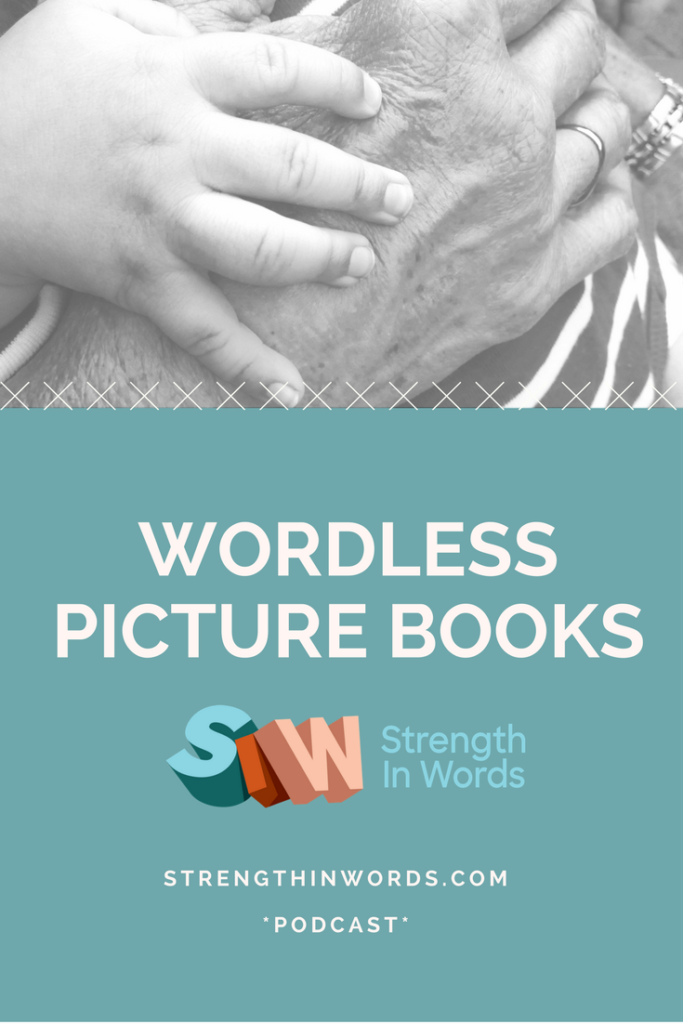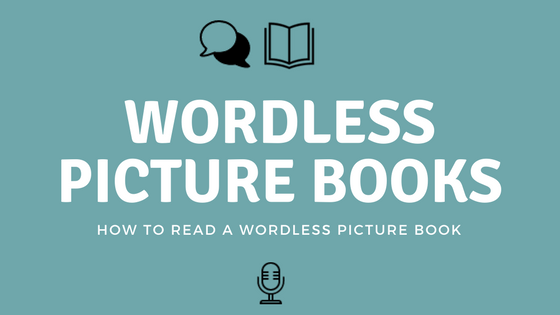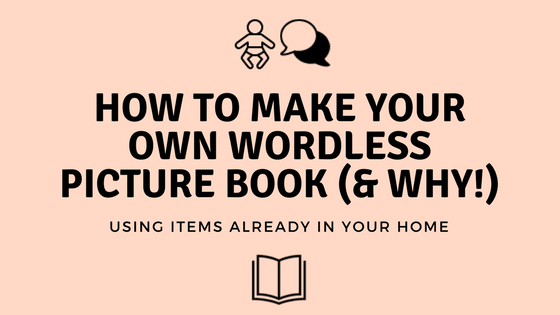She’s an educator, a therapist, a mom, and she has some great ideas for you about early literacy.

Meet Megan Lingo, Educational Therapist, creator of Chickadee Lit, and co-creator of KidArt Lit. In this episode of Learn With Less, Megan spoke to Ayelet about wordless picture books.
Have you ever sat down with a wordless picture book and thought, “am I doing this right?” The first answer is, probably! Listen to our conversation and hear Megan’s 5 great tips to get you excited about reading wordless picture books.
Megan Lingo is a veteran reading teacher, Educational Therapist and mom to three small children. She writes about reading for kids and families on her blog, Chickadee Lit and co-creates wonderful art and story kits at KidArt Lit.
Disclosure: I love KidArt Lit. I love it so much, I became an affiliate, which means that if you click on this link and decide to purchase, I may receive a small commission (at no additional cost to you)!
Connect With Us:
Ayelet: Facebook / Instagram / Pinterest
Megan at Chickadee Lit: Website / Instagram
Megan at KidArt Lit: Website / Facebook / Instagram / Pinterest
>>Don’t Miss Our Corresponding Blog Post!<<
Transcript of this episode
Ayelet: Today, i have a special guest to welcome to Learn With Less, Megan Lingo, educational therapist, mother to three young children, and creator of Chickadee Lit [and co-creator of KidArt Lit.] Megan, welcome!
Megan: Thanks so much for having me, I’m so excited – this is my first podcast experience.
Ayelet: Very exciting! So, why don’t you start by telling me a little bit about your professional background. I think a lot of people listening might stumble over the term “educational therapist.”
Megan: Well, an educational therapist is a professional who works with individuals with learning differences or learning disabilities, usually in a school setting, or in a clinical setting. An educational therapist might provide some diagnostic help, some direct remediation, and also some kind of advocacy or case management for people who have learning disabilities and are navigating a public school system or a university system, or the workplace. So, as an educational therapist myself, I’ve worked in a variety of school settings and also clinical settings, mostly with kids who have language-based learning disabilities which affect their reading skills.
Ayelet: And how has all that translated to Chickadee Lit and what you are doing now?
Megan: Well, before I was an educational therapist, I was a reading teacher in public, private and charter schools for a number of years, and I’m just super passionate about reading. I think it’s just the best thing that you can do with your free time and so, so important. And then when I became a mother, it became even more important to me.
Reading is something that’s always been a passion of mine, professionally and personally, and now as a mother, the opportunity to share this intimate and emotional experience with my kids as they are just beginning to make meaning out of story… it’s just the most beautiful thing! And I’m so passionate about making the most of that experience for my family and also helping other parents enjoy and make the most out of that story time experience, too.
Ayelet: As a mother of three young children, has your own experienced your work in early literacy, or how has it?
Megan: That’s an interesting question. I think that it has brought in a new emotional level to my work. The idea that we can use developing literacy to connect and to deepen connections, I think is really powerful. It’s a way for you to expand your experience and the experience of your children, well beyond the walls of your house or your local community – a way to see the world.
And also, it’s just so fascinating to watch children learn language for the first time! To watch them receive, and watch them express, and watch them develop more complex ideas and be able to express more complex ideas over time. I’ve really gotten an intimate and close look at the way people create meaning and layers over time, and literacy and reading is a huge component of that.
Ayelet: I totally agree. I think what you said about giving your children experience through the language of books – it’s so true! I mean, you can expose them to vocabulary, for instance, that, obviously, you would never see if you didn’t live near a volcano, for instance. But, you might read a book about a fantastic volcano.
So, today, you and I wanted to discuss and focus on early literacy for infants and toddlers through the reading of wordless picture books. I think many of us as adults pick up a book and just expect to read what’s on the page. I’ve spoken a bit in previous episodes of Learn With Less, such as Think Outside The Text, about some ways to be playful instead of feeling confined by the limitations of what, I suppose, we could call “traditional book reading.” But let’s talk a little bit about why you recommend using wordless picture books.
Megan: Well, I agree that wordless picture books… there’s something about them that can be really intimidating! When my daughter was first born, some family friends gave us a beautiful wordless picture book that I put away on the shelf, like, “no, I can’t read this, I don’t know what to do, it’s too complicated…”
Ayelet: I have to think too much!
Megan: Yeah! I have to think too much, I’m tired, I just want to say what it says on the page. But wordless picture books can be so rich. Some of our wordless picture books are the most rich and complex texts that we have… and I really don’t want any families to miss out on the experience of getting into those books with their kids. I also love them because, even though it can feel like pressure at first, in fact, it’s no pressure, because you can do whatever you want with a wordless picture book, and you’re free to let your child lead whatever way the story takes them, or whatever the way the pictures take them.
And also, there are absolutely no barriers to enjoying a wordless picture book together. Because there are no words on the page, it doesn’t matter how old you are, or how well you can read or how well you can’t read, or what language or languages you’re speaking together… all you have there are those beautiful images to guide you, and that is a really beautiful, magical thing.
Ayelet: I love that – I think we miss out on thinking about what a great resource it is for multi-lingual families, as well. It’s wonderful.
So, you mentioned that you have some special tips to share with all of us. So, can we hear them?
Megan: I do. In sharing wordless picture books and becoming more interested in all the wonderful wordless picture books that are out there, I developed kind of a tool kit that I use with my own kids for enjoying the books. And these are strategies that families can use to read any book, but I think they lend themselves particularly well to wordless books, and give people a place to start engaging around a wordless picture book when you might be wondering where to get started.
So, when I read a wordless picture book with my kids, the first thing I do is take a picture walk. It’s really tempting to tell kids the title of a book, and you just start on the cover and say, “here’s this book,” and the title kind of says what it’s about, or you might say what it’s all about, but if you take a picture walk, all you’re doing is flipping through the pages, and looking at what you notice with the kids, and letting your child take the lead in pointing out what they notice, and pointing out what’s interesting and important for them.
You can do some things to invite that, and move that process along – but really, the best thing to do when you take a picture walk is to just get out of their way. It can be lovely to just flip through and look at those books, and look at the pictures in the book. Picture walks are also an excellent way to build engagement and interest before you start reading the story, because already they’re looking, and they’re intrigued and they’re wondering what’s going to happen next, and it just makes for a nice neutral beginning for their building of understanding.
Ayelet: It’s so true. And how funny that our – not disengagement – but our sort of sitting back and zipping it, instead of trying to sort of lead the activity, is actually an invitation for them to lead. It’s because I think a lot of us feel like we have to guide, and we have to be in charge of a book-reading activity because our children don’t know how to read yet. So, I love what you say about this is a wonderful opportunity for engagement, because it is a wonderful way for them to, in a sense, show us how they can engage with a book.
Megan: Exactly. It’s so tempting to say, “this is the right answer, this is what happens next.” But if you get out of their way, even if you think that it’s wrong, understanding is building upon layers over time, and you don’t need to correct them – they’re building their own path through the book, and through life, right?!
Another thing that I do when I read picture books that don’t have any words with my kids is think aloud for them. And thinking aloud is an excellent thing to do whenever you read aloud with your kid. Because when you’re doing that, you’re giving them kind of a glimpse inside of your head, and letting them understand how you make meaning, and how you build understanding. And it also builds a frame for them, that they can construct their own meaning and their own understanding in.
So, I might just use some stems to get started, like with questioning. I would say, “when I see this, I wonder about why he feels this way…” or “I wonder what’s going to happen next,” – and just showing them that you wonder and you have questions can be a powerful tool to help them ask their own questions and have their own curiosity.
Another way to think aloud that I think is important is: don’t be afraid to model confusion. It’s something I often think aloud about because as adults when we’re reading, we have dissonant moments and we have moments when our comprehension breaks down, and that’s ok. And I really want to share that message with all kids, and with my kids, that it’s ok to be confused, and here’s what I do – I stop, and I notice that I’m confused, and then I say, “let’s look for some clues to help figure out what’s happening!
The third tool that I use in my “wordless picture book tool kit” is all about getting them talking, and encouraging expressive language in kids through wordless picture books. Because there aren’t any words on the page, you can say and your child can say whatever he or she wants! So, it’s a great opportunity to get them to start speaking and expressing.
Some tricks for doing that are sitting face to face and reading. A lot of times, we sit side by side, in a bed or in a chair together, but you can encourage talking by sitting face to face when you’re reading the book, and they’re looking that way so they can see what you’re doing what your mouth when you’re saying certain words. Another tip for encouraging expressive language through wordless picture books is: not being afraid to make all the funny sounds in the book, and getting them to make sounds.
There’s one book that my son, who’s 2, and he loves things that move – trucks and trains. There’s this great book by Donald Crews called, “Truck,” and it’s just a bunch of pictures of trucks. And we like to… they zoom, and they zip, and they honk, and they do all the things that trucks do, and he loves to imitate those sounds that I make. And do all the things that trucks do and he loves to imitate those sounds that I make.
And then, you know, as your kids grow older, you can encourage them to name things that are on the page, and you can also encourage them to look at the book and get them to tell stories that have a beginning, middle, and an end. And when you get them talking, you don’t have to do the talking anymore! And it’s pulling out of the language that you want to encourage.
Ayelet: And it’s true, I mean, even with what we could consider a pre-verbal infant or toddler, you mentioned a little bit before, gesturing and pointing to certain things, and then you’re talking about what they’re interested in on the page, but also using those environmental sounds is such a great way to, like you said, get them talking, and get them vocalizing, and get them associating the representation of an object and a sound in the environment.
Megan: Ok! So another opportunity that wordless books provide is the opportunity to focus on inference. Making inferences is a thinking skill that adults have, and that we’ve developed after a lot of time, and a lot of time, and a lot of repetition, basically just the ability to read between the lines and to draw conclusions based on clues that you see in the environment. And a great way to encourage that is by sharing wordless picture books!
One of the ways to start with that skill is by looking at the characters’ faces and trying to figure out what they’re thinking and what they’re feeling, based on the expression on their face and the situation that they’re in. That’s kind of a double whammy, because it helps kids develop this skill of inferencing that is so important to navigating the world, and it also helps them build their repertoire of social/emotional skills – understanding what different emotions are and understanding what other people (in this case, a character in a wordless book) might be experiencing in a given situation.
My favorite book for that is this book called, “Wave,” by Suzy Lee, and it’s a great summer read for families who are vacationing at the beach. It’s just the experience of a little girl encountering the ocean at the seashore for the very first time, and she runs through so many different emotions of fear and trepidation to wonder and surprise, and it’s a wonderful book to share with my 3-year old, because she really surprises me with how wise she can be about what experiences she’s seeing on the page.
My last tip for wordless books is all about extending the experience. One of the great things about a wordless books is you can never read it the same way twice. A book with words, you know, you can go through, and often times our kids’ favorite books we kind of memorize the words… but a wordless book is always new, every time. And we can take advantage of that and help it have many, many lives. So one of the things that you can do is incorporate written language if your kids are getting started down that road, or just to model that for very young kids with sticky notes!
You can take sticky notes and write down, label, their favorite parts of the page, and for older kids, write dialogue – maybe what the characters in the book might be saying to each other. And then you can turn it into a book on tape, if you want to read it with your child and record it, and then they can listen to it on their own, later. One of the people that I had a chance to chat with on Instagram about wordless books, tried that technique, and she had multiple children who all recorded their own version of the book on tape, and then listened to each others’, and were surprised by what was the same and what was different in their own interpretations.
So, there’s so much play that you can do with a wordless book, whether it’s focused on language, focused on oral language or written language, or even just drama! Acting it out or doing art that responds to it in some way, tactile experiences together.
Ayelet: Oh, thanks so much, Megan! So, where can our listeners find you if they want to check out more about you and about Chickadee Lit.
Megan: Well, Chickadee Lit is on Instagram. That’s the place where I’m most active right now, and I hope any of your listeners who are on Instagram will join me, because I’m posting my family’s favorite books, wordless books and other kinds of books, almost on a daily basis, and building a really great community of book lovers and parents who love reading with their kids. It’s a great place to connect with other people around reading and sharing the experience of reading as a family. I also am on Facebook at Chickadee Lit, and, coming soon, my blog at www.chickadeelit.com.
Ayelet: Perfect! Thanks so much, Megan!

